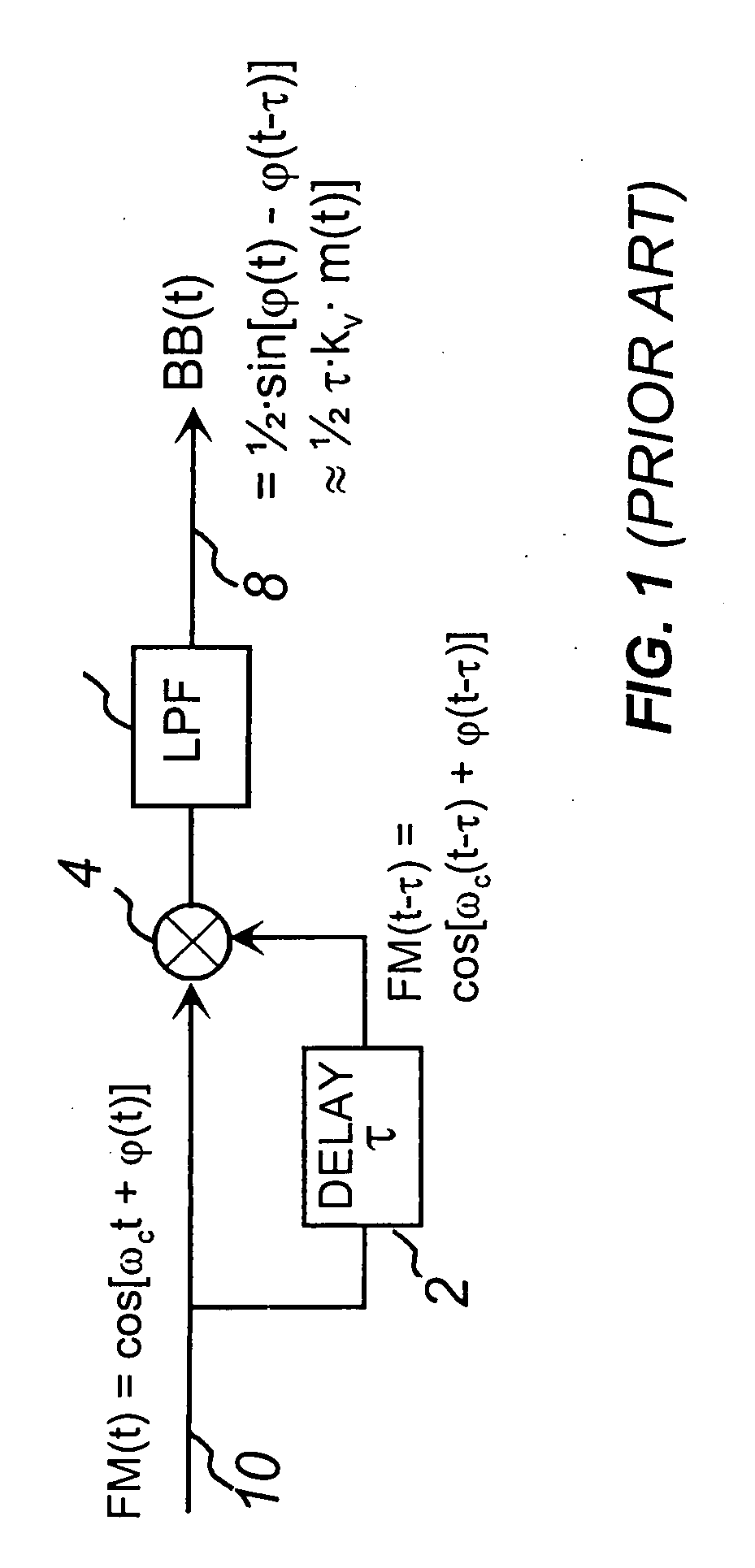High frequency low noise phase-frequency detector and phase noise reduction method and apparatus
a detector and low noise technology, applied in the direction of electrical equipment, angle demodulation by oscillation conversion, automatic control of pulses, etc., can solve the problems of limiting the phase noise performance of the phase noise in the synthesizer, significant deformation, and degradation of the phase noise performance of the synthesizer, so as to achieve less noise
- Summary
- Abstract
- Description
- Claims
- Application Information
AI Technical Summary
Benefits of technology
Problems solved by technology
Method used
Image
Examples
example 1
[0191] With passive mixers @ RF frequency of 5 GHz the PFD 500 achieves 180 dBc / Hz CNR at RF: LO level at input 530=20 dBm (translates to 17 dBm LO drive level at I / Q mixers after quadrature split); signal level at input 118=18 dBm, which translates to 15 dBm at I / Q mixers inputs, after 3 dB loss in quadrature splitter; thermal noise=−174 dBm / Hz; Total Loss from input 118 to output 128=12 dB=3 dB (quadrature split loss)+6 dB (I / Q mixers loss) −3 dB (coherent signal addition)+6 dB (mixer 126); CNR=18 dBm+174 dBm / Hz−12 dB=180 dBc / Hz. The noise figure of the passive mixer in this calculation was assumed close to conversion loss, fact well known in the art. It is possible by using mixers with yet higher LO and input signal levels to attain even more impressive PFD performance than the one illustrated in this example.
example 2
[0192] In an integrated IC solution @ RF frequency of 2 GHz the PFD 500 achieves 167 dBc / Hz CNR at RF: signal level at input 118=5 dBm; LO level at input line 530=5 dBm; conversion gain from input 118 to output 128=0 dB; noise figure=12 dB; thermal noise=−174 dBm / Hz; CNR=5 dBm+174 dBm / Hz−12 dB=167 dBc / Hz. In comparison, today's best conventional digital PFD IC (having a state of the art noise floor of −218 dBc / Hz, which is defined as the phase-noise floor extrapolated to 1 Hz RF frequency), would achieve a CNR performance of no better than 125 dBc / Hz at RF of 2 GHz, highlighting the impressive 40 dB advantage that the present art PFD has. The level of the present PFD IC performance illustrated in the above example 2 by no means presents an upper limit. Even today (mid 2005) with some more advanced IC processes and more aggressive signal drives it may be possible to exceed the performance shown in this example, and certainly as the IC technology advances and the signal power compress...
PUM
 Login to View More
Login to View More Abstract
Description
Claims
Application Information
 Login to View More
Login to View More - R&D
- Intellectual Property
- Life Sciences
- Materials
- Tech Scout
- Unparalleled Data Quality
- Higher Quality Content
- 60% Fewer Hallucinations
Browse by: Latest US Patents, China's latest patents, Technical Efficacy Thesaurus, Application Domain, Technology Topic, Popular Technical Reports.
© 2025 PatSnap. All rights reserved.Legal|Privacy policy|Modern Slavery Act Transparency Statement|Sitemap|About US| Contact US: help@patsnap.com



